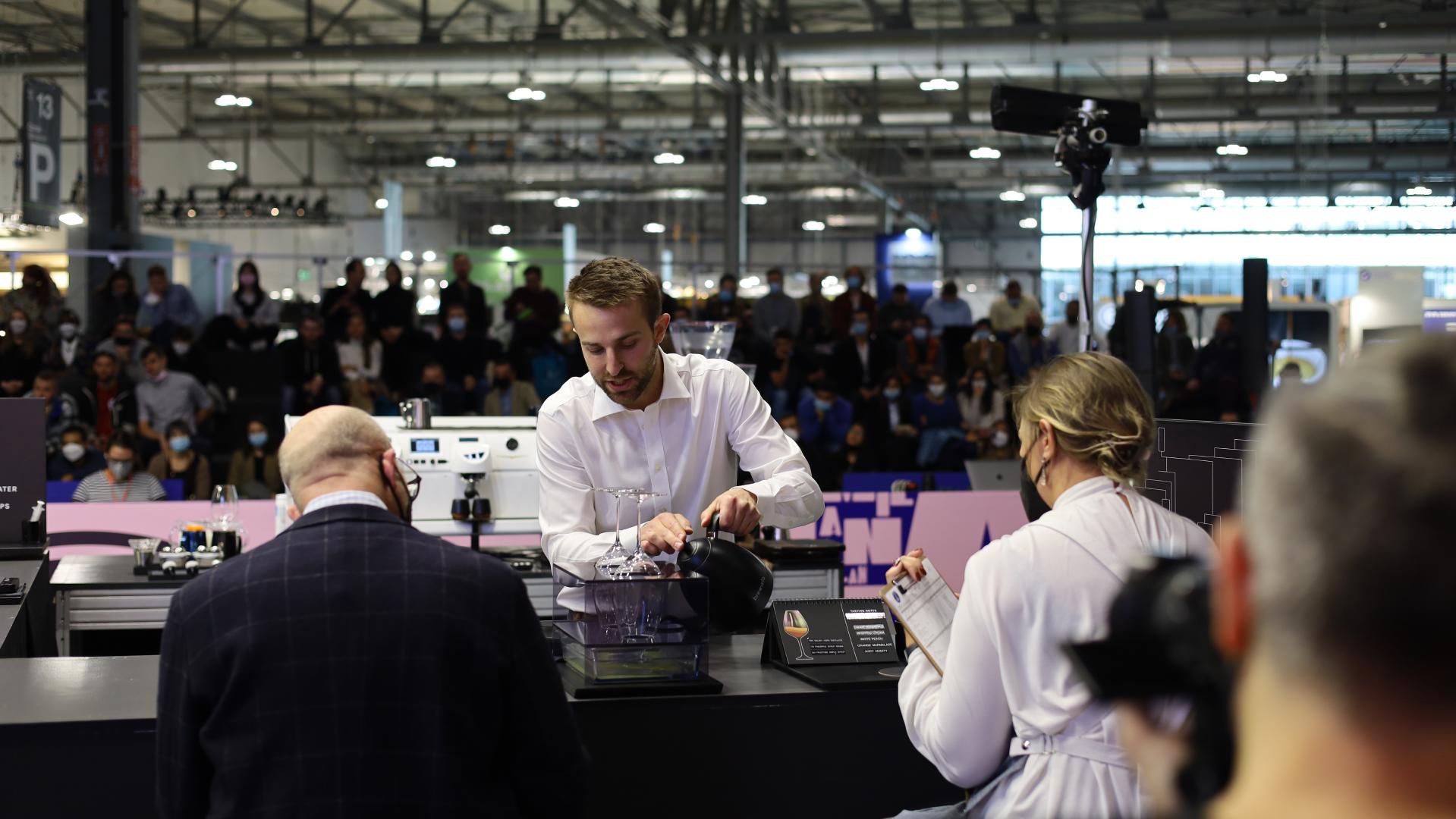Why blends are taking over at coffee competitions
Jenna Gottlieb chats to 2021 WBC finalist Hugh Kelly about the reappearance of competition blends and what it means for the future of the coffee industry.
For years, single origin coffees have dominated the specialty market. Considered by some to be the “purest” way of experiencing coffee, they allow the coffee’s characteristics to shine and have become virtually synonymous with quality.
However, attention has recently turned back towards the potential of blends: a combination of two or more single origin coffees, with one coffee typically making up a significant proportion, known as the “base”.
In few places has this trend been more evident than barista competitions.
In 2021 alone Matteo D’Ottavio won the UK Brewers Cup Championships with the blend of Geisha and Sudan Rume, while the reigning World Brewers Cup champion, Matt Winton, won with a blend of eugenioides and Catucai. So what’s driving it?
“Baristas not only want more control over what they do, but they like to express themselves,” says Hugh Kelly, who finished third in the 2021 World Barista Championships.
“Producers ferment in a certain way, roasters apply their roast profiles, but the competition has become more about what the barista themselves are doing to coffee. This is also aimed at specific points on a score sheet and it has something barista-focused that they can talk about.”
The role of blends at competitions
Single-origin coffees started to become popular at competitions in 2010. They were seen as the best way to present the coffee’s distinct characteristics, as well as highlighting both the growing conditions and processing methods of the region.
However, naturally, this creates certain limitations, namely the difficulty achieving a completely “balanced” cup. Blending coffees, on the other hand, can help iron out imperfections, while adding balance to the cup.
“I think people are fascinated by coffees that have got all the variables right,” Hugh says. “Our standards have increased in recent years. Back in 2015, exciting flavour was enough for most people in the industry as fermentation wasn’t being pushed so hard.”
“Now a lot of ‘high-end coffees’ are those with exciting flavour coming from more fermentation, but with this comes structural issues, so blending can be a good way to balance out qualities such as acetic/vinegar acid and tannins.”
Creating a blend requires skill as coffees need to complement each other and contribute their best characteristics. Baristas also need to consider the solubility of each coffee, otherwise the extraction could be uneven.
As such, baristas carefully weigh the characteristics of each coffee and find what works best. “I chose to use liberica for milk because it had insane aromatics and creaminess, but by itself, it was a little wild in flavour profile,” Hugh says.
“This is why I chose to blend this coffee to improve the milk-based experience and, in turn, serve a coffee that has never previously seen WBC finals.”
What is the impact of blends on the industry?
More often than not, innovations and talking points at coffee competitions will filter down into the wider community and spark trends in the industry.
In the case of blends, this is already happening on a wide scale thanks to the benefits they provide to both producers and businesses. Of particular interest is their ability to transform lower quality coffees into high-value offerings.
“The logistics and techniques used generally at farm level cannot be perfectly controlled and executed to the optimum level for every lot,” Hugh explains. “The most famous and highly regarded producers in the world still have their great lots and less than perfect ones with still some exciting attributes.”
This also has benefits in terms of scale. Rather than selling a micro or nano lot as a limited edition coffee, businesses can blend it with other coffees to bring it to more customers without compromising on quality.
“We are running a promotion for Matt Winton’s WBC-winning blend to be served in our shops with dialled water, specific roast profiles, ageing, and drinking instructions. This is being served and treated with the same respect as a best of Panama winner or 92+ experimental nano lot. It’s exciting because one of the coffees in the blend is essentially a nano lot but, as only a proportion of a blend, there are suddenly a lot more doses that can be served.”
While single origin coffees are all about paying homage to the region, blends also offer an opportunity for slightly more leftward branding. For example, limited edition blends released at Christmas or Halloween have become increasingly common.
“At ONA, our marketing department is putting fun branding based around flavour profiles of blends as special releases,” Hugh says. “I find my mum saying things like ‘I tried the Blueberry Cupcake blend on the weekend and loved it’, which says a lot about the impact that the right blend can have in everyday cafes.”
So, with all the benefits and opportunities that blends offer, does it spell the end of single origin coffees at competition level? Hugh thinks not.
“At last year’s World Barista Championships, five of the top six, including myself, all used single origins for espresso,” Hugh says, “because when you find a coffee with all the right elements, it’s a beautiful thing.”








